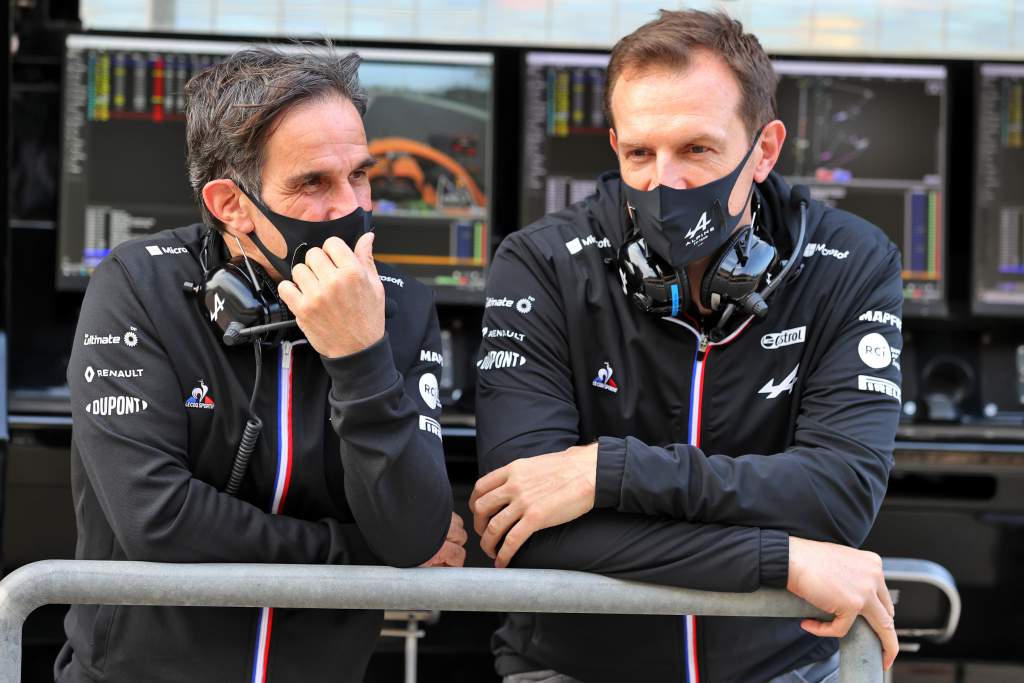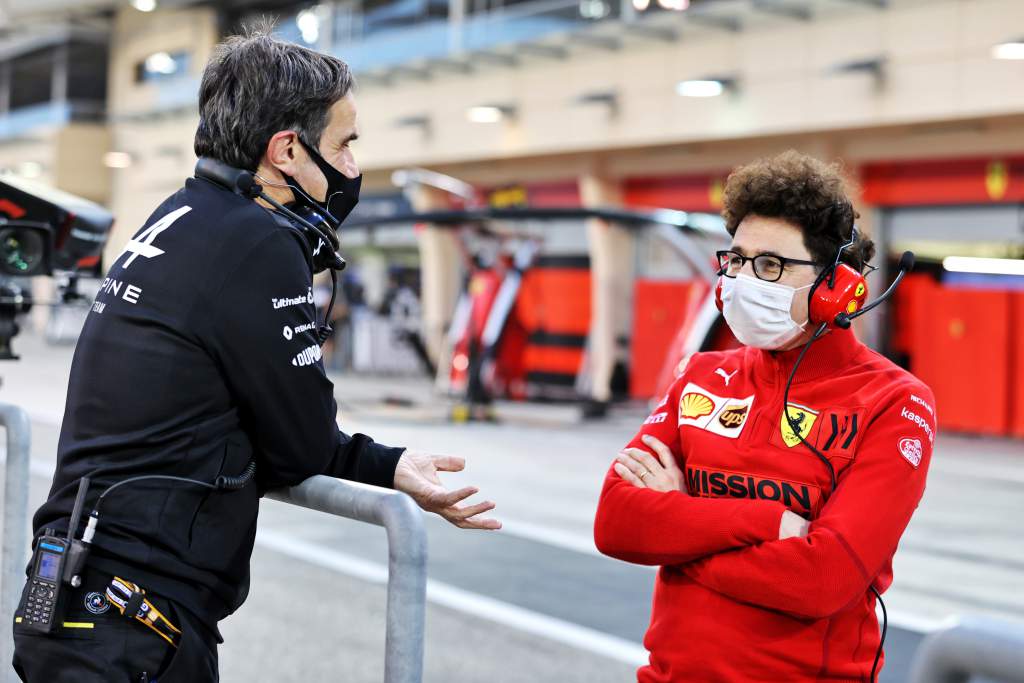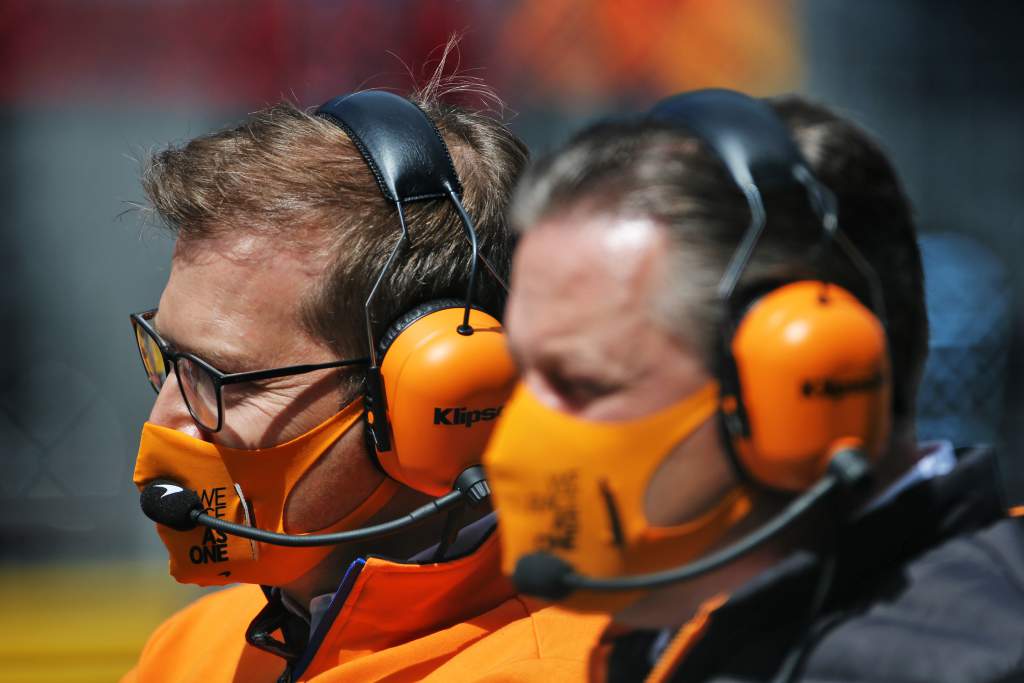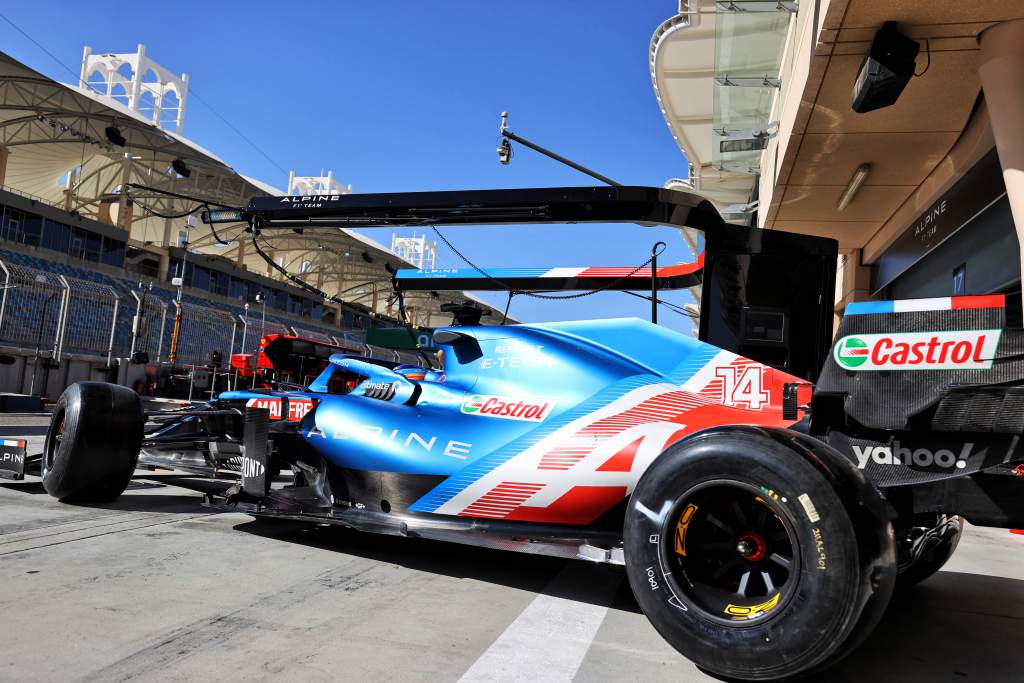Up Next

From the curious manner of Cyril Abiteboul’s Renault exit to the revelation he wouldn’t be replaced as team principal, Alpine’s Formula 1 team leadership structure has raised eyebrows.
As has been well-documented, Alpine’s management set-up includes Laurent Rossi as CEO, Marcin Budkowski as executive director and Davide Brivio as racing director.
There are two positions on this. The official line from the team is that Budkowski and Brivio are on the same level and both report to Rossi, with a separation of duties designed to optimise the running of the team back at base (Budkowski) and the trackside operations (Brivio).
But a rumour suggests that Abiteboul couldn’t legally be replaced directly as team principal because he was ousted through Renault chief Luca de Meo making the position redundant.
It’ll remain a curiosity as long as the team and company refuse to address it publicly.
Asked by The Race if it had been planned to rejig the structure and remove Abiteboul, or if Abiteboul had resigned and left Alpine to put a new structure in place, Rossi said: “Unfortunately, I couldn’t say because I was brought in only early this year after I delivered, alongside Luca de Meo, the new strategic plan for Groupe Renault.
“But what I know though is that the structure was there when I arrived, we firmly believe in it, and that’s all I can say unfortunately.”

If we believe the idea that the team principal position was made redundant and therefore Abiteboul couldn’t be directly replaced, it might mean that one of Budkowksi and Brivio actually has slightly more authority than the other and is effectively team principal in all but name.
But with a CEO above them, ostensibly overseeing the Alpine business and the F1 programme, it wouldn’t explain why their respective responsibilities need to be split between two people – which is where the party line at least has an element of logic attached.
So if we return to believing this is what Alpine intended, it still sticks out from every other team. Because even as F1 team structures have slowly shifted to become tailored to modern-day requirements, Alpine’s goes quite a lot further.
The traditional all-in-one team boss is being phased out. Mercedes and Red Bull still stick to it, with Toto Wolff and Christian Horner wearing the CEO and team principal hats. But in the biggest, modern F1 teams the duty of the CEO is as much, if not more, about managing a broader business than day-to-day tasks and running the show trackside.
Ferrari is slightly different as the company has president and CEO positions, with a dedicated F1 team boss. That’s still the same now with Ferrari president John Elkann in an acting CEO role and Mattia Binotto, who like Budkowski has a technical background, overseeing the F1 team.

Where there’s a clear departure is McLaren, which for a few years now has had a Racing division CEO in Zak Brown, who appointed team principal Andreas Seidl.
Williams has now gone in that direction as well, recruiting Jost Capito as CEO while Simon Roberts remains team principal and reports directly to Capito.
The rationale is very similar to Alpine’s division of labour between Budkowski and Brivio. Having a CEO to oversee the bigger picture and leave the day-to-day running of the team allows for greater focus, a clear division of duties, transparency and accountability.
Asked by The Race about McLaren’s structure, Brown says it works “extremely well” for a company that has other racing focuses, namely an IndyCar project and potentially a Formula E interest in the future.
“Andreas and I have an outstanding working relationship,” says Brown. “I think it’s extremely clear what my role is, what Andreas’ role is, and it is very clear to the team too.
“My job as CEO is to field the most competitive, financially sustainable racing team, not only in F1, but anything else that we may venture into like IndyCar.
“My job is to get the best people in the business – and I think we’ve done that, Andreas is the best team principal in the pitlane, in my humble opinion – and to allow him the space.

“I don’t know how to run an F1 team, it’s not my competency. That’s what Andreas is awesome at.
“So my job is to give him the freedom, the support, and the financial resources to allow him to do his thing.
“Andreas has full authority to run the F1 team as he sees fit.”
Different organisations will give their team principal different levels of autonomy on that score. That will ultimately come down to trust.
Seidl takes great pleasure from the “freedom and support” he feels he has in his role, which allows him to “bring my style and my experience and my way of how I want to set up an F1 team and lead it”.
There’s a nice parallel between McLaren and Alpine because they have a shared need to split up responsibilities. Alpine having Rossi in the CEO position makes a lot of sense with a big, big job on his hands to build the wider brand, and he must have a tangible link to the F1 team because the F1 team is absolutely central to making the brand more visible – and, as a business, more viable.
But the key difference between McLaren’s once-unique arrangement and Alpine’s is obvious. It’s not CEO and team principal, it’s CEO and two people beneath. And this is at the heart of uncertainty over whether this structure’s viable.
The division of responsibilities is clear to a degree, but for F1 teams to work they need to have clear objectives, a single-minded approach and the right kind of leadership.

A cynic might argue Alpine has three people doing the same job Toto Wolff and Christian Horner do at Mercedes and Red Bull, given their roles involve the CEO-ship, running the team at base and working trackside as well. Although Budkowski’s role specifically overseeing the technical elements at Enstone (and supposedly Viry) has a technical director’s touch as well.
Even comparing the likes of McLaren and Williams, which have departed from the traditional structure by splitting the CEO and team boss roles, Alpine has an extra cook in the kitchen.
The team has applied some logic to the absence of a single senior team figure beneath Rossi. But that logic is either misplaced or has been retrospectively fitted to the situation.
Something’s still amiss. The success of Alpine’s project might depend on whether that’s just a discrepancy between reality and what we’re being told, or a fundamental flaw in how the rebranded team has been set up.







